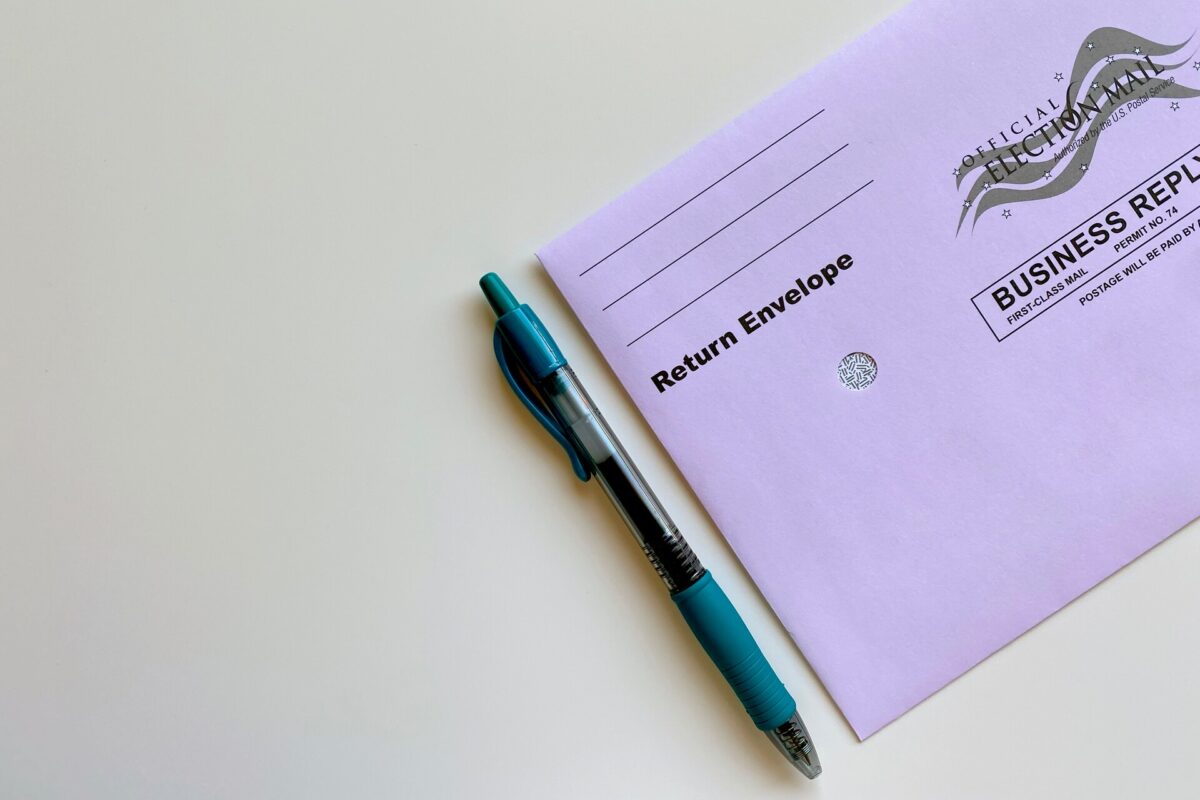Changing your voter registration after moving is crucial to ensure accurate information and active participation in the democratic process. Check your new state’s requirements, update your information accurately, and verify your registration status. Providing necessary documentation, meeting deadlines, and confirming updates are important. Remember, you can typically change your registration online or at a local election office. It’s essential to maintain one registration and vote in the state where you primarily reside.
A Citizen’s Guide: How to Change Voter Registration in 3 Simple Steps
Whether you’ve recently gone through moving cross country, experienced a name change, or want to update your political affiliation, this comprehensive guide is here to show you how to change voter registration. We understand that participation in our democratic system is crucial, so here are the three straightforward steps that will provide you with all the information and resources necessary to successfully register.


What Is a Voter Registration?
Voter registration is a fundamental component of any democratic society. It is the process by which eligible individuals formally enroll themselves to vote, ensuring their participation in local, state, and national elections. It serves as a means to maintain accurate voter rolls, allowing election officials to verify the eligibility of voters and prevent fraudulent activities.
In most countries, including the United States, voter registration is necessary to exercise the right to vote and have a say in shaping the government and policies that affect our lives. By registering to vote, individuals become active participants in the democratic process, enabling them to elect representatives, voice their opinions, and influence the direction of their communities and nation.
Who Has the Right to a Voter Registration in the US?
In the United States, the right to voter registration is granted to all eligible citizens who meet specific requirements. Generally, to be eligible for voting, an individual must be a US citizen, be at least 18 years old (or meet the state-specific age requirement,) and fulfill residency requirements set by their state of residence.
While the Constitution guarantees the right to vote to eligible citizens, it is important to note that certain individuals may be temporarily or permanently disqualified from their right to vote. This can include individuals convicted of certain felonies, individuals deemed mentally incompetent by a court, or non-citizens.


Why Learning How to Change Your Voter Registration Is Important
Learning how to change your voter registration is crucial for maintaining an accurate and up-to-date record of your voting information. When life events such as long-distance moving, name changes, or shifts in political affiliation occur, updating your registration ensures that you can exercise your right to vote effectively.
By doing so, you avoid potential complications, such as being assigned to the wrong polling place or not receiving important election-related information. Additionally, accurate voter registration helps prevent instances of voter fraud by ensuring that only eligible individuals are able to cast their ballots.
Why Do You Need to Change Your Voter Registration When Moving?
Learning how to change your voter registration when you move is an essential step to ensure that you can vote in the correct jurisdiction. Each state and locality has its own set of electoral districts, which determine the candidates and measures that appear on your ballot.
There are a lot of things to consider when you move – your new address may place you in a different district, which means your voting options and representation could change. By updating your voter registration with your changed address, you can ensure that you receive the correct ballot for your current location and have the opportunity to vote for candidates and issues that directly impact your new community.
How Does Not Changing This Impact Your Voting Status?
Not registering when necessary can have significant impacts on your voting status. Firstly, failing to update your voter registration after moving may result in being unable to vote in your new locality or district. Your old address might be associated with a different polling place, meaning you won’t be able to cast a ballot in your new community.
This could lead to disenfranchisement and a missed opportunity to participate in local decision-making processes. Moreover, if your voter registration contains outdated information, such as an incorrect address or political affiliation, it may lead to administrative errors or challenges during the voting process.


Step 1: Check Voter Registration Requirements in Your New State
Before attempting to register to vote in your new state, it is crucial to first check the voting requirements specific to that state. Each state has its own set of regulations and procedures, including deadlines, residency requirements, and necessary important documents. By taking the time to familiarize yourself with these requirements, you can ensure that you meet all the necessary criteria and avoid any potential complications or delays in the process.
Visit the Official Website for the Secretary of State
One reliable and comprehensive resource for checking the voting requirements in your new state is the official website of the Secretary of State. The Secretary of State’s office is typically responsible for overseeing elections and voter registration processes at the state level.
Their website provides a wealth of information, including voter registration guidelines, forms and important papers, deadlines, and frequently asked questions. By visiting this official Secretary of State website, you can access accurate and up-to-date information directly from the authoritative source, ensuring that you have the most reliable guidance for registering.

Storage
Cross Country Moving Company is the most trusted name in auto industry in the country.

Auto Transport
Cross Country Moving Company is the most trusted name in auto industry in the country.
Moving Insurance
Cross Country Moving Company is the most trusted name in the relocation industry in the country.
Contact Local Election Officials
Another effective method to gather information about voting requirements in another state is to directly contact the local election officials. Local election offices are responsible for managing voter registration at the county or city level, in case you’re relocating to a city, and can provide valuable guidance specific to your locality.
They can inform you about any unique requirements or procedures that may differ from the state’s general guidelines. Contacting local election officials allows you to ask questions, clarify any uncertainties, and ensure that you have a clear understanding of the registration process tailored to your specific area.
Ask People on Various Related Forums
Engaging with online forums or communities dedicated to voting registrations and civic engagements can be a useful way to gather insights and advice from individuals who have gone through the same process. These forums may include local residents, activists, or individuals who have recently moved and successfully registered to vote.
By posting questions or reading through existing discussions, you can gain practical tips, learn about any potential challenges others have encountered, and receive recommendations on resources or strategies to navigate the registration process effectively. However, it’s important to verify the information obtained from online forums with official sources to ensure accuracy and reliability.


Step 2: Update Voter Registration Information
Once you have familiarized yourself with the requirements in your new state, the next step is to update your information. This ensures that your voter record reflects your current address, name, and other relevant details, allowing you to vote in your new jurisdiction accurately.
Providing step-by-step instructions for each option of updating your voter registration information is essential to assist you in navigating the process effectively. There are typically three main options available, so let’s explore each option in detail.
Register In-Person at a Local Election Office
For those who prefer a face-to-face interaction or require assistance in completing the registration process, registering in-person at a local election office is an option to consider. Visit your nearest election office during their operating hours and inform the staff that you need to update your information.
They will provide you with the necessary forms and guide you through the process. It is important to provide accurate and up-to-date information to ensure that your voter record reflects the correct details. Take advantage of the opportunity to ask questions and seek clarification on any steps or requirements you are unsure about.
Register Online
Many states offer the convenience of online registering systems, allowing you to update your information from the comfort of your new home. To register online, you will typically need to visit the official website of the Secretary of State or the state’s election division.
Follow the instructions provided on the website, fill out the required fields accurately, and submit the form electronically. Online registration systems often have built-in validation checks to ensure you provide all the necessary information, reducing the likelihood of errors. It is important to provide accurate and up-to-date information to maintain the integrity of your record.
Fill Out a Paper Form
If online registration is not available or if you prefer a physical form, you can opt to fill out a paper registration form. These forms can usually be obtained from various sources, such as local election offices, public libraries, or official websites. Carefully read the instructions on the form, fill it out accurately, and ensure that you include all required information and documentation.
Once completed, submit the form through the designated channels, which may include mailing it to the election office. It is crucial to double-check the accuracy of the information provided on the form, as errors or omissions can lead to delays or complications in the registration process. Watch this video if you need more help on how to fill out a voter registration form.
Step 3: Verify Voter Registration Status
After updating your voter registration information, it is crucial to verify your status to ensure that all changes have been processed correctly. Verifying your registration status is an important step in the process, as it allows you to check for any scams, errors, or discrepancies that may have occurred during the update process.
Discussing the importance of verifying voter registration status after updating information is crucial to ensure that your voting rights are protected. By checking your status, you can confirm that your updated information has been accurately recorded in the voting database. This helps prevent potential issues such as being marked as inactive or being assigned to the wrong precinct on Election Day, which could result in challenges when attempting to cast your vote.
One option is to use online tools provided by the official Secretary of State or local election office websites. These tools typically allow you to input your personal information, such as your name and address, to check the status of your voter registration. The online tool will display your registration status, confirming whether your updates have been successfully processed.
Another option is to contact your local election officials directly. They can provide you with the most accurate and up-to-date information regarding your status. Reach out to the appropriate office, either by phone or in person, and provide them with your updated information. They can verify your registration status and address any concerns or discrepancies that you may have.
After the Process of Changing Voter Registration, Contact Cross-Country Movers for All Relocation Needs
Changing your voter registration is an important and empowering process that ensures your participation in the democratic system. However, it’s worth noting that changing it is just one aspect of planning your relocation. If you need assistance with other aspects of your move, such as packing services or transporting belongings, consider researching cross-country moving companies, hiring long-distance movers, and relying on their cross-country moving services.
By hiring a long-distance moving company that specializes in providing reliable and efficient long-distance moving services, you can make your move easier and reduce your anxiety about relocating to another state. So, feel free to contact us and let Cross Country Moving Company take care of everything while you can focus on exercising your civic duty.
FAQ
What Information Do I Need to Provide When Changing My Voter Registration After Moving to a New State?
When changing your voter registration after moving to a new state, you typically need to provide identification documents, such as a driver’s license or state-issued ID, to verify your identity and residency, as well as personal information such as:
- your full name,
- new address,
- date of birth,
- previous address.
How Can I Find Out the Voter Registration Requirements in My New State, and Where Can I Go to Update My Registration Information?
To find out the voter registration requirements in your new state, visit the official website of the Secretary of State or the state’s election division. These websites typically provide detailed information on guidelines, forms, and deadlines. You can update your registration information either online, by filling out a paper form and submitting it by mail or in person, or by visiting a local election office.
Is There a Deadline for Changing My Voter Registration When I Move to a New State, and What Happens if I Miss This Deadline?
Each state has its own deadline. It is essential to check the specific deadline for your state. If you miss the deadline, you may not be able to vote in upcoming elections. However, you can still update your voter registration for future elections.
Do I Need to Provide Any Additional Documentation When Updating My Voter Registration After Moving to a New State?
The additional documentation required can vary. Generally, you may need to provide proof of residency, such as a utility bill or lease agreement, to establish your new address. Some states may also require a copy of your identification document, like a driver’s license or social security card, to verify your identity.
How Long Does It Typically Take for Voter Registration Information to Be Updated After Submitting the Necessary Forms?
The processing time can vary by state and the volume of registrations being processed. In many cases, it takes a few weeks for the changes to be reflected in the system. However, it’s advisable to contact your local election office or check the status online to confirm the update.
Can I Change My Voter Registration Information Online, or Do I Need to Do So In-Person at a Local Election Office?
Many states offer online voting registration systems, allowing you to change your information conveniently over the internet. However, some states may require in-person registration or provide the option to update your information through paper forms submitted by mail or in person at a local election office. Check your state’s specific guidelines for the available options.
Are There Any Fees or Costs Associated With Changing Voter Registration Information After Moving to a New State?
In general, there are no fees or costs associated with the process. Voter registration is a free process aimed at ensuring every eligible citizen can participate in the democratic process.
How Can I Verify That My Voter Registration Information Has Been Updated Correctly After Changing My Address or Moving to a New State?
You can verify your information by using online tools provided by the official Secretary of State or local election office websites. These tools allow you to check your status and ensure that your updated information has been accurately recorded.
Will I Still Be Able to Vote in Federal or National Elections if I Do Not Update My Voter Registration Information After Moving to a New State?
You may face challenges in voting in federal or national elections. Your registration information needs to reflect your current address in order for you to vote in the correct precinct and receive the appropriate ballot. Voting in the wrong precinct or using outdated registration information may result in your vote being challenged or not counted.
Can I Register to Vote in Multiple States if I Split My Time Between Two Different Locations?
No, you cannot register to vote in multiple states simultaneously. Each state requires you to declare residency and register to vote in that specific state. Registering to vote in multiple states would be considered voter fraud. It is important to choose the state where you primarily reside and register to vote there. If you split your time between two different locations, you should register and vote in the state that you consider your primary residence and where you spend the majority of your time.







